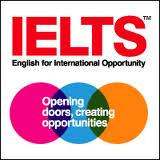ARTHUR SWEETMAN
Special to Globe and Mail Update
Many immigration issues transcend economics, but Immigration Minister Jason Kenney’s cross-country consultation is a remarkable opportunity for an overdue national discussion regarding the role of immigration in the Canadian economy.
Economists, government analysts and others have been documenting the ongoing decline in immigrant labour market outcomes for at least two decades. In 1980, the percentage of immigrants and the Canadian-born living below the low-income cut-off (sometimes called a poverty line) was almost identical at about 17 per cent. Since then, the rate for immigrants increased to more than 21 per cent (in 2005), while that for the Canadian-born decreased to 13 per cent.
Most of the difference appears to be driven by declining labour market outcomes for subsequent cohorts of new arrivals. Immigrants who landed in the late 1970s earned at entry roughly 15 per cent less than comparable Canadians. Since then, the earnings gap has increased significantly and is now in the range of 35 per cent to 40 per cent. The gap narrows as time spent in Canada increases, but it’s not clear that the average recent immigrant will catch up in a reasonable working lifetime.
While federal and provincial governments have taken steps to improve labour market outcomes, more is needed. Research shows there are many factors at play, but two stand out: language ability and age at arrival.
It’s well understood that English- or French-language skills are important for labour market (as well as social) integration for all immigrants, but they’re especially important for the skilled workers we seek to attract.
The Canadian “points” system currently sets the same language requirements for all immigrants. But there’s some evidence that language skills are especially important in facilitating the portability of preimmigration human capital for high-skilled immigrants. Unfortunately, some appear not to have the language skills necessary to fully employ their occupational/educational skills in the Canadian labour market. Putting increased emphasis on language ability at selection for the highly skilled seems to make sense if a “fast start” is desired. Simultaneously, providing settlement resources to allow more extensive language training would be a good investment.
Demographic issues also interact with economic ones. There have been suggestions that immigration’s economic class (as opposed to family or refugee class) be employed to address the dependency ratio associated with population aging. But the actual operation of the system does not appear to have paid any attention to this goal. While those in the skilled worker category are awarded points for “age,” these don’t align with demographic needs. (Strangely, neither do they align with the observed age profile associated with positive labour market outcomes. Rather, they are flat and at their maximum from age 21 to 49.)
As a result, the demographic peak for current immigrants coincides with the peak for the baby boom and, therefore, increases rather than alleviates problems associated with baby boomers’ impending retirement. While a sensible immigration system can only influence our nation’s age structure a little one way or the other, the immigration system could start to “fill in the Generation X valley” between the hills of the baby boom and baby boom echo.
Finally, the immigrant selection system needs better/more management tools and transparency. The “inventory” (backlog) of applications is untenable and requires action. While recent changes are going in the right direction, they appear to be insufficient. One million people are currently waiting to be processed, and more are added to the list every day.
Additional measures – such as increased preliminary screening and stronger proactive management of the application process for the economic class, including adjusting the points threshold to manage the queue – would be beneficial. Coming to admission decisions more quickly and improving economic outcomes for new immigrants will be better for prospective immigrants and for Canada. Increased transparency, including regular detailed reporting of processing times, might also assist in improving system operations.
Arthur Sweetman is a professor in the Department of Economics at McMaster University. He recently presented research findings at the Institute for Research on Public Policy’s conference on Canada’s long-term immigration policy.
















